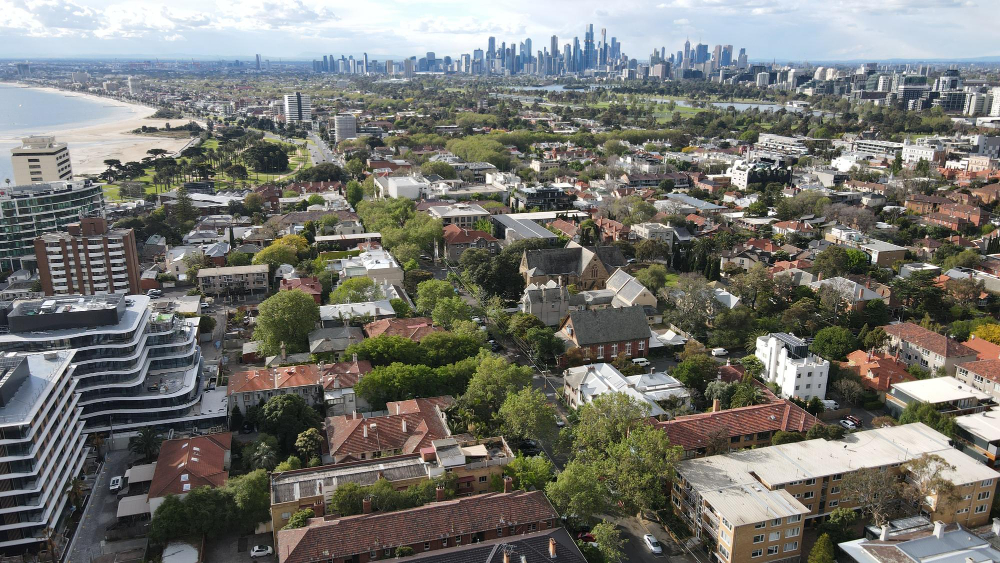Australia’s housing market keeps surprising experts. Every time analysts expect a slowdown, new data flips the story. Over the past seven years, our population has grown by nearly three million, yet rental listings have fallen by more than half and homes for sale are down around 25 per cent. That’s fewer options for a lot more people, and it’s pushing prices higher in ways we haven’t seen before.
This isn’t just a short-term bump. It’s a sign of something deeper, a national supply squeeze meeting a wave of demand that won’t fade anytime soon. Many buyers feel locked out, while investors are trying to figure out where the next surge will happen.
That’s where AbodeFinder comes in. We help buyers and investors cut through the noise with data-driven property insights that reveal which suburbs are likely to grow before everyone else catches on. Our tools, like SuburbFinder, Buying Chance Calculator, and Suburb Insight, use real data to show where demand is rising, supply is tight, and value still exists.
If you’re serious about building wealth through property in 2025 and beyond, you need more than opinions; you need evidence. AbodeFinder gives you exactly that, helping you buy with confidence, spot opportunities early, and move before the crowd.
The Supply Crunch No One Saw Coming
Rental and Sale Listings Collapse
Australia’s property market isn’t just tight, it’s choking on a supply shortage. Seven years ago, there were around 80,000 rental listings across the country. Today, that number has dropped to roughly 37,000, a 54% fall. The number of homes listed for sale has also shrunk by 25%, falling from 319,000 to about 239,000.
At the same time, the population has grown by three million people. More households are forming, migration is climbing, and construction simply hasn’t kept up. Every extra person means another bed, another roof, another place to live, yet we’ve been adding fewer homes, not more.
This is the core of Australia’s affordability challenge. When there’s half the number of rental homes and fewer properties on the market, competition becomes fierce. Buyers stretch budgets, renters face bidding wars, and prices keep edging higher.
At AbodeFinder, we track these numbers closely. Data like this helps our clients understand why supply matters and where the biggest gaps create future opportunities. When housing stock is this limited, knowing which areas still have breathing room can be the difference between paying too much and buying smart.
Where the Shortfall Is Worst
According to data from the ABS, Urban Taskforce, and the Federal Government, the outlook for new housing supply is uneven across the country:
-
New South Wales: 65% of required homes will be built
-
Queensland: 79%
-
Victoria: 98%
-
South Australia: 71%
-
Western Australia: 81%
-
Tasmania: 51%
-
Northern Territory: 31%
-
National average: 78% of targets will be met
That means some states will have deep shortages through to 2029 and beyond. Northern Territory, Tasmania, South Australia, and Queensland stand out as the most undersupplied markets. These are the regions likely to see stronger price pressure as population growth continues.
For smart investors, under-supply isn’t a problem; it’s an opportunity. These are the places where demand is likely to outpace construction for years to come. By identifying suburbs within these states that still offer affordability and growth potential, you position yourself ahead of the curve.
At AbodeFinder, our tools and insights help pinpoint those areas before the headlines catch up. Because when supply is tight, timing and local knowledge make all the difference.
The Demand Engine Still Running Hot
Buyer Psychology and Price Expectations
Even after years of steady growth, buyer confidence remains stronger now than during the 2021 boom. Surveys show that more Australians expect house prices to rise in the coming year than at any time since the pandemic surge. That optimism fuels action people rush to buy before prices climb further, which then drives the very growth they expect.
This is the herd effect in real estate. When enough people believe the market will rise, their behaviour makes it happen. It’s psychology turned into price movement.
In The 48 Laws of Power, Robert Greene explains that “Control the narrative, and you control behaviour.” The property market is no different. The story right now that prices will keep going up shapes buyer decisions across Australia. Whether it’s first-home buyers stretching budgets or investors chasing the next growth suburb, the belief itself becomes a force that sustains demand.
At AbodeFinder, we help our clients stay ahead of this wave not by guessing where the crowd is going, but by using real data to spot where the herd hasn’t arrived yet. Because real success comes from seeing the next story before everyone else starts believing it.
Household Strength Keeps the Market Alive
While prices climb, households remain financially stable. Mortgage arrears are sitting at under 1%, the lowest level since 2022. That means fewer Australians are falling behind on repayments, even after multiple interest rate hikes.
At the same time, savings buffers are growing. Mortgage offset account balances are rising every year, showing that Australians are building solid cash cushions. These savings act as a safety net — protecting borrowers from short-term pressure and giving investors confidence to act.
“You win by managing cash flow, not timing fear.”
That mindset reflects what’s happening today. Households with healthy balance sheets can ride through rate cycles and keep buying strategically. They’re not paralysed by fear, they’re planning for the next five years.
At AbodeFinder, we help investors think the same way. With our tools and suburb data, you can make informed decisions that match your financial capacity and long-term goals, not just the latest headlines.
Which Cities Could Outperform
Why the Underdogs Might Win
Some of Australia’s best opportunities are hiding in plain sight. While Sydney and Melbourne often dominate the headlines, the real upside may belong to Perth, Darwin, and parts of regional South Australia. These areas have lagged behind in growth over the past decade, but that’s exactly what makes them interesting now.
This is what investors call the “catch-up effect.” When a city’s growth stalls for too long while fundamentals stay strong, it eventually rebounds as prices adjust and demand returns. Perth is a perfect example: after years of underperformance, its affordability, population growth, and rental demand are now driving renewed interest. Darwin and regional SA follow a similar pattern: tight supply, rising rents, and low entry prices are setting the stage for above-average returns.
At AbodeFinder, we see these regions as value plays for investors who want exposure to growth without paying big-city premiums. Data-backed suburb insights help identify which areas within these markets are moving first and which still offer untapped potential before the crowd catches on.
Sydney and Melbourne Still Have Pockets of Gold
That said, don’t count the big cities out. Even in cooling markets, there are always micro-markets that move against the trend. In Sydney, for instance, areas like southwest Sydney are seeing strong construction demand and limited supply. New builds remain well below target, creating upward pressure on prices.
Melbourne tells a similar story. While the city overall may look steady, certain inner and middle-ring suburbs continue to attract strong buyer activity thanks to infrastructure projects, transport links, and local employment growth.
The secret is thinking “suburb within suburb,” not just capital city. The property market isn’t one big wave; it’s a series of ripples. Some suburbs boom early, others lag behind, and understanding that pattern is where the smart money is made.
That’s why AbodeFinder focuses on data granularity. Our SuburbFinder and Suburb Insight tools break markets down to the postcode level, helping buyers and investors discover micro-opportunities that broader market reports miss. With the right data, you don’t need to chase hype; you can create your own advantage.
The 5-Year Wealth Window (2025–2030)
100 Suburbs Could See 50–100% Growth
The next five years could mark one of the biggest opportunities Australia’s property market has seen in decades. With housing supply lagging and demand refusing to slow, projections suggest that up to 100 suburbs could see prices rise by 50–100% by 2030.
That kind of growth doesn’t happen everywhere; it rewards precision. Many of these suburbs still sit in the affordable price bands under $500,000, yet history shows how quickly that can change. Over the past decade, 77 suburbs that once sat below $500K have now crossed the $1 million mark.
This is how wealth is built quietly. Investors who act early in affordable growth corridors often find themselves holding million-dollar assets just a few years later. The key is knowing which locations have the right mix of low supply, population growth, and infrastructure momentum before they hit the mainstream.
That’s exactly what AbodeFinder was designed for. Our data tools uncover emerging suburbs with growth signals that others miss. When you invest with precision, you don’t need to chase the market; you can position yourself ahead of it.
The Middle Class Is Shrinking. Choose Your Side
Property commentator PK once said the middle class is being “obliterated.” It’s a confronting idea, but there’s truth behind it. The gap between those who own appreciating assets and those who don’t is widening every year.
In a market where wages grow slowly and housing costs climb fast, property ownership becomes the dividing line. If you own the right asset, you’ll ride the wave. If not, you’ll watch it pass.
That’s not fearmongering, it’s a wake-up call. The next five years will separate those who act strategically from those who wait for “the right time.” The reality is, the right time rarely announces itself; it’s recognised by people who can read the data and trust the trend.
At AbodeFinder, we help everyday Australians move from uncertainty to confidence. Whether you’re buying your first home or your next investment, our insights show you where real opportunities lie and how to secure your place on the right side of the wealth divide.
How to Position Yourself Now
The Smart Buyer’s Playbook
In a market where prices are climbing and supply is running short, smart buyers know that location, data, and timing matter more than anything else. Guesswork doesn’t work anymore. The investors who win are the ones who use data and expert guidance to make confident decisions.
That’s where AbodeFinder comes in. We help you uncover suburbs that are still under the radar but showing strong signs of growth before the boom peaks. Our approach is built on real data, not hype.
With tools like:
-
SuburbFinder – see which areas are gaining traction based on vacancy rates, supply pipelines, and affordability trends.
-
Buying Chance Calculator – estimate your odds of securing a property and understand market heat in real time.
-
Suburb Insight – get a snapshot of population growth, income levels, infrastructure projects, and price forecasts.
This is how you position yourself ahead of the pack. When you know what’s coming, you don’t have to chase the market; you can move before everyone else.
Conclusion
Australia’s property story for 2025–2030 is clear: low supply and strong household savings are fuelling sustained price growth. While others wait for a crash that never comes, informed buyers are quietly building wealth.
“Those who move first set the terms. Those who wait, pay the price.”
If you’re ready to take action, AbodeFinder can help you move with confidence. Use our data-driven insights to find your next growth suburb — and turn today’s uncertainty into tomorrow’s opportunity.
Start your Suburb Insight today at abodefinder.com.au













